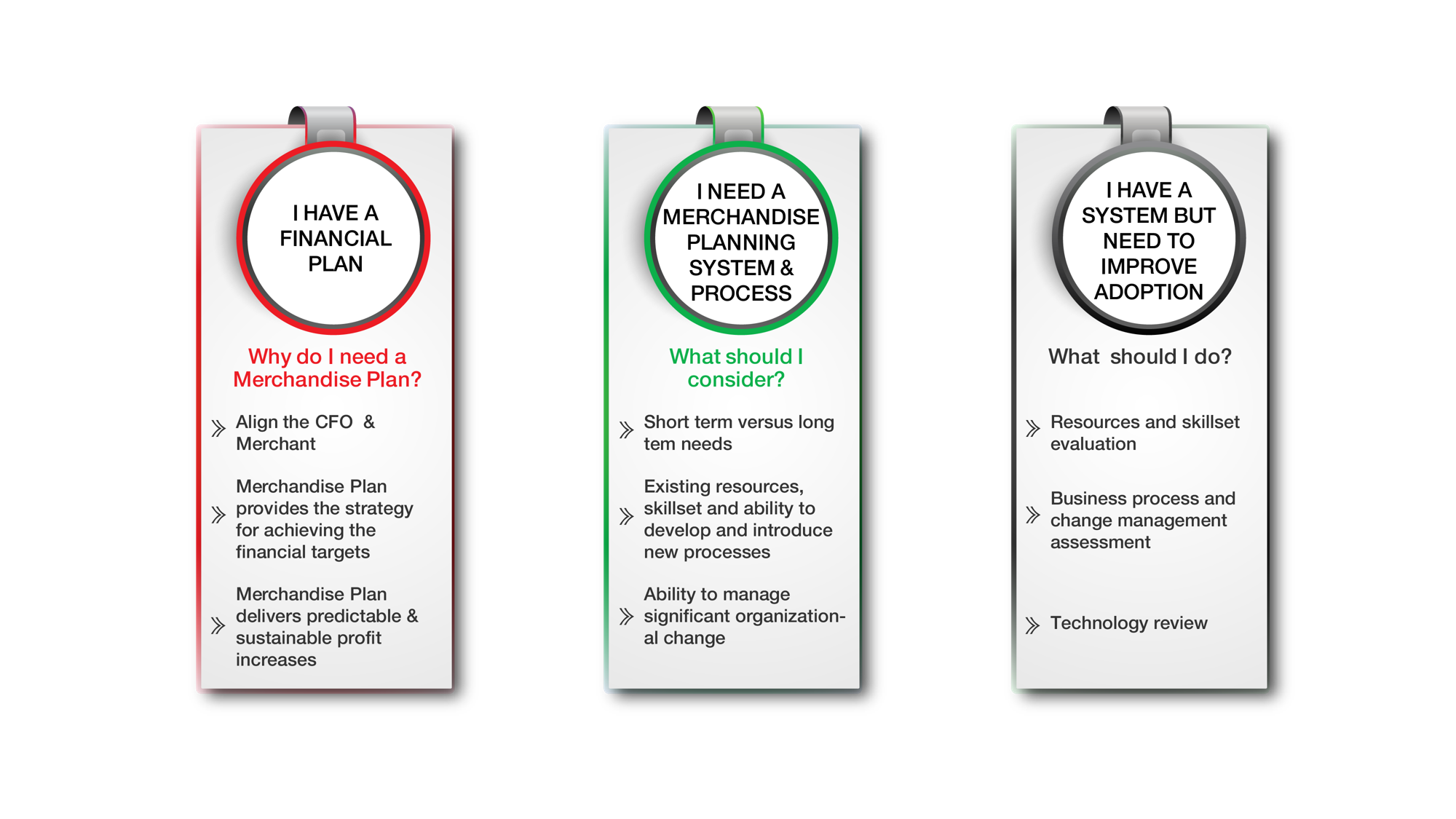Are you getting the most out of your Merchandise Planning?
3 Common pitfalls why companies do not succeed in Merchandise Planning
Unfortunately many companies fail entirely and others have disappointing results with the practice of merchandise planning. Upon close examination one can quickly establish some commonalities.
Complexity
To explain this I am going to use the analogy of a technology novice purchasing the most expensive laptop loaded with the latest and most sophisticated apps. One month after the purchase they barely use the laptop because they lack the knowledge to truly utilize most of the applications on it. Now imagine a company new to merchandise planning and/or with minimal internal experience purchasing sophisticated planning software and then adding alternate planning hierarchies and 20 or so additional metrics to plan!! It becomes an overwhelming and time consuming task for an inexperienced organization. Often times many of these additional metrics are difficult to measure and sometimes have no impact on the bottom line. They are “nice to have” but have no real value. In this scenario Merchandise Planners spend all their time managing the plan rather than analyzing the business and producing real action plans.
Process and Structure
In this instance one has invested in the technology but lacks in structure and the necessary strategy, process and methodology. Without a roadmap to follow one cannot get easily to the destination. Merchandise planning is a systematic approach to planning financial targets. In order to do that effectively and in a timely manner one requires a defined planning process that brings together Finance, Merchants and Operations. The planning process should include strategy meetings (goal setting), planning calendar, milestones and final sign off. There may be other steps to add depending on the individual company structure. Effective and timely process management is critical to being successful. Without strategy and process there is no starting point and no finish line.
A company that does not invest in a planning structure with clearly defined roles and accountabilities will likely fail and/or have disappointing results. There can be no grey area for who does what, who owns which part of planning process and who is responsible/accountable for which metrics. Planners and Merchants need to be aligned on the strategy and the budget. Each brings a different perspective and skillset to the process. There should be meaningful and challenging discussions between the two parties. While they need to be a functional working team; accountability and ownership need to be clearly defined. Without clear definition one can expect to have conflict and missed opportunities for the business.
Adoption (buy in & utilization)
Change management is typically an area of difficulty in most organizations. You have got the technology and a structured planning process but you just cannot seem to achieve the desired results. One must not underestimate the time and effort needed to effectively communicate, coach and train all parties involved in the planning process. This includes not only Planners but also Merchants, Operators and Finance Associates. Transparency and a clear understanding of the process and goals will greatly increase the adoption within the organization. Consistent strong support from the senior executive team will further improve the adoption. Change management needs to become engrained in your culture and daily activities.
Any one or any combination of these pitfalls is typically why a company is not successful in the practice of merchandise planning. A company that invests time, effort and resources in each of these individual components will realizes the financial rewards. Notice I did not mention Technology! That is because it is almost never the reason for lack of success. It might hinder one from developing more sophistication and more complexity but it will not be the cause of poor results or total failure.
